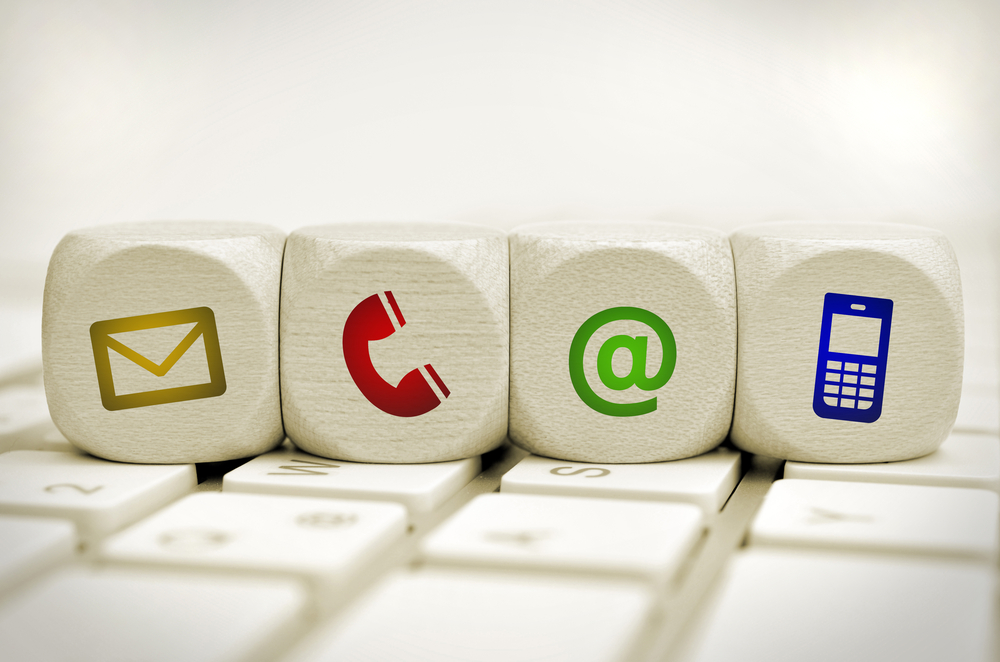Better communication with patients can affect everything from doctors’ Yelp scores to health outcomes. And there are more ways than ever for patients and doctors to communicate — health apps and patient portals are booming, and countless surveys show that patients increasingly want to be more involved in their health care.
Doctors seeking to qualify for Meaningful Use incentives that require the use of patient portals may also be interested in different ways of communicating with patients beyond the typical phone call to schedule appointments. But what kinds of communications do your patients want from you? And do they prefer mail, phone, email, or text? We take a look at the different options, and which patient communication methods affect patient engagement and compliance.
How do patients want doctors to communicate with them?
Patients are getting tech-savvier, and busier. That seems to be the message of a recent FICO survey that revealed that four out of five smartphone users worldwide are interested in mobile health technology that will let them interact with health care providers. They are especially open to receiving reminders about appointments and medications. The survey also showed that a quarter of patients want their doctor to contact them via email, and nearly 43 percent would prefer to be reached via phone.
Since communication preferences can vary by age, education, and even income, how do you know which channel your patients prefer? Ask them. Upon check-in or check-out, or when you’re scheduling an appointment, ask how they prefer to be contacted. Be sure to note their preferred language of communication, as well.
This is a simple but important step in getting patients to follow through, said health care consultant Marcia Tourtellott, who presented “Using Technology to Drive Patient Action” at the 2014 Medical Group Management Association Conference. “If I communicate with you in a channel you prefer, it’s going to be more effective,” she told Physicians Practice.
Tailor the type of communication to your message
As you might expect, text messaging is particularly effective when communicating with younger patients. But it’s also a good way to reach low-income patients, since this population is more likely to have access to text-enabled phones as opposed to the Internet. Texting works best if there is a need to communicate specific directions or timely actions, said Tourtellott.
Automated voice calls tend to work well with older patients, and are best for reminders and to capture data. Email is good for reminders, detailed instructions, and information such as test results that should be saved. A mailed letter may be the best way to share test results with some patients. And patient portals are a good place to store reference information like patient education materials and videos.
If you try to do too much with a single type of communication, you risk confusing or overwhelming the patient. A text or email reminder that a patient is due for a follow-up appointment is not the place to provide a lot of information about their condition. The message should be direct and simple. Effective reminders move patients to action and make it easy for them to do so, noted Tourtellott.
Why flexible, visual communications are key
Once a patient has made an appointment, doctors have a few different options for communicating with them. Some doctors prefer to email patients information about their practice and/or procedure in advance, so that patients have time to review the materials and ask questions during their appointment. Other times, doctors may prefer to go over the materials with patients one-on-one during the visit. They may also provide patients with information to take home or access online after the appointment.
Visual materials, such as medical animations and videos, have been proven to be more effective than oral or written communications. As much as 65 percent of the population are estimated to be visual learners who understand and retain information better when it includes colorful, visually stimulating photos, diagrams, illustrations, or videos. Your patient education content should be direct and easy to understand, at an appropriate health literacy level.
A benefit of cloud-based online patient education programs is that they can solve the problem of communicating with different patients via different channels. The same software can allow you to email a video to patients, play it for them in your waiting room and exam room, and post it on your practice’s website, social media pages, and patient portal.
If you want your patients to take action – whether that’s making an appointment, taking their medication, or improving their health habits at home — effective patient communication is key. To find out more about how technology can help you achieve this, check out the Technology & the Internet section of our blog archives.
For an interactive look at our patient-education program, sign up for a free two-week trial today.

